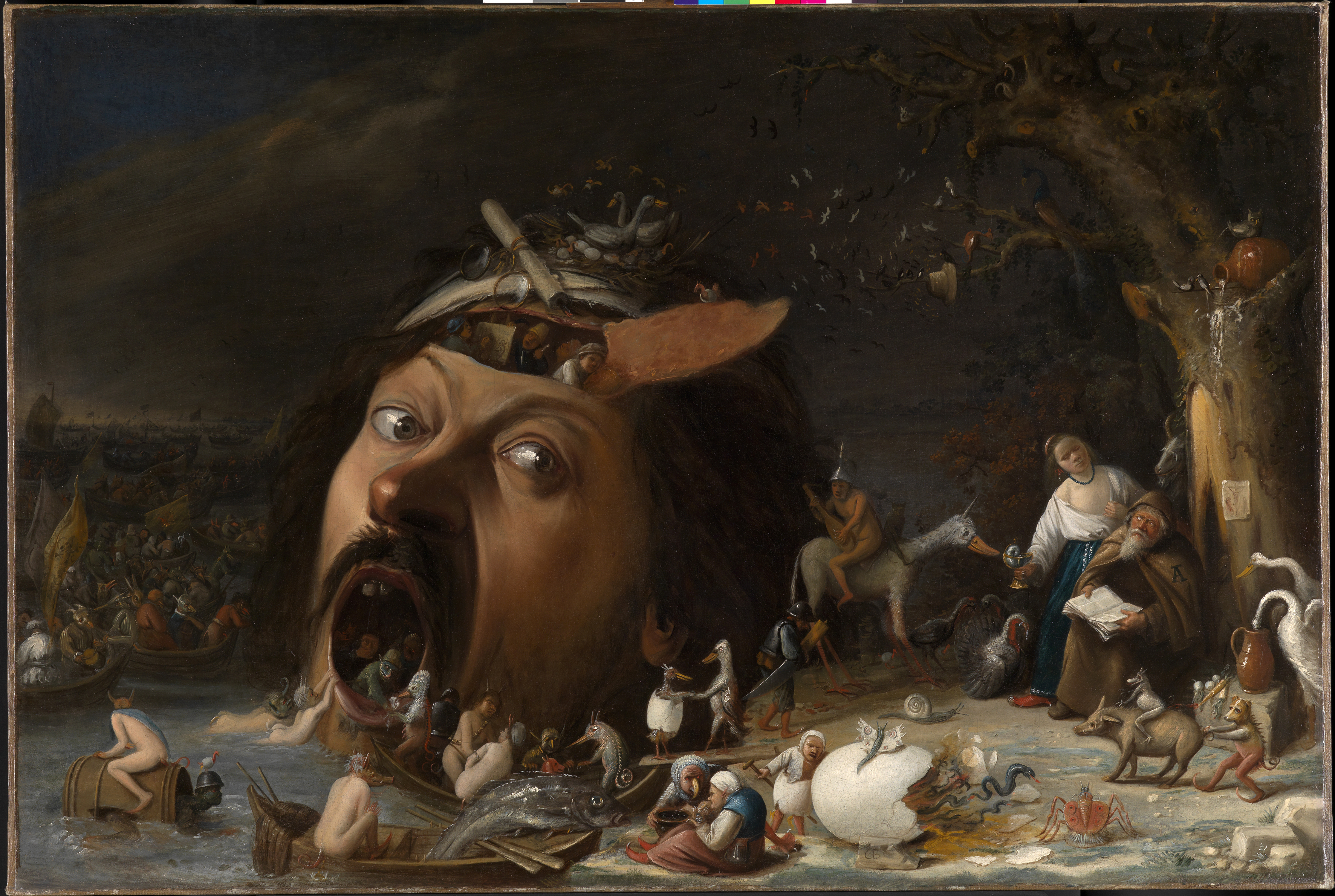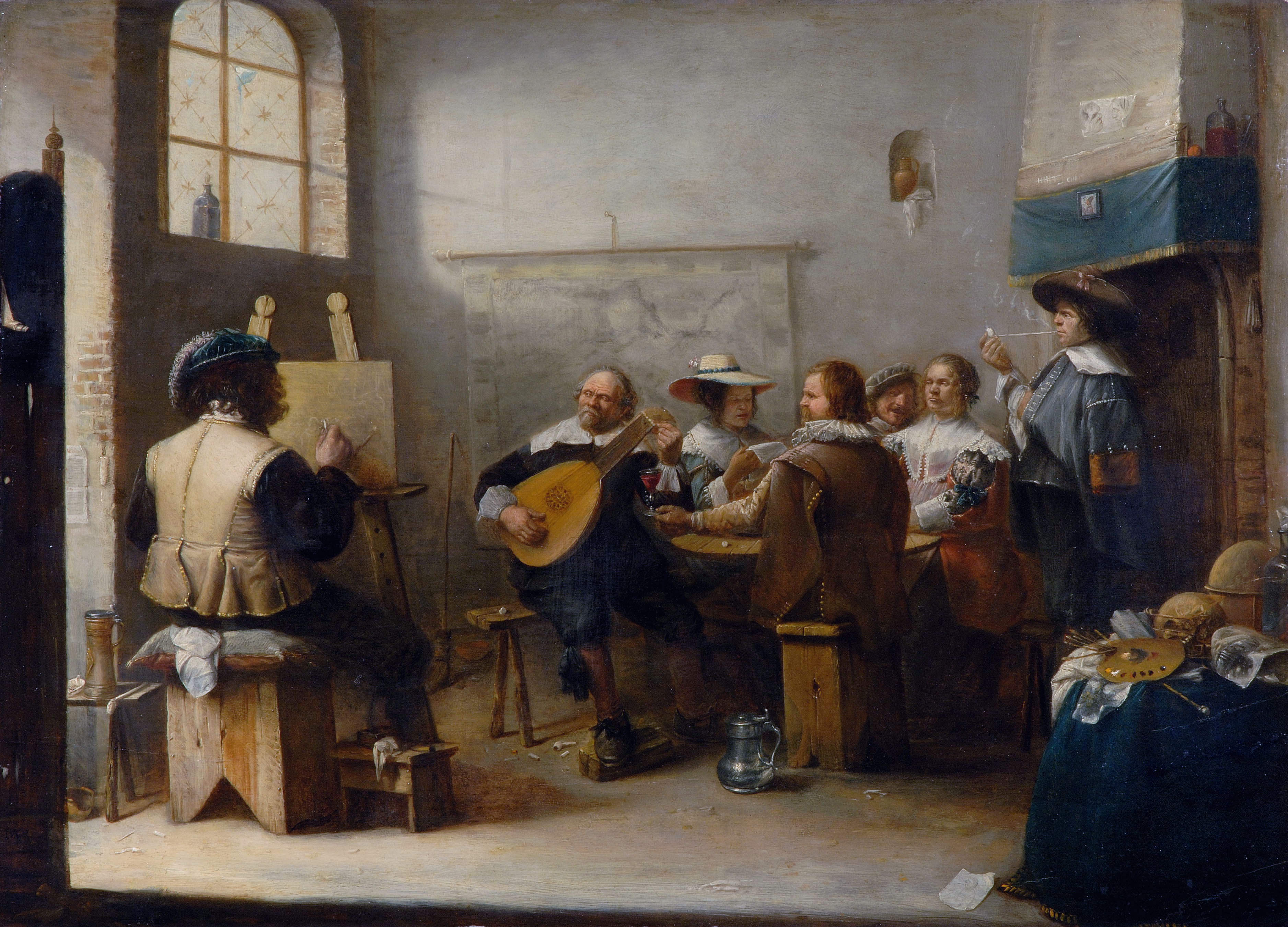After the division of the Netherlands into the Calvinist North and the Catholic South in the 16th century, Flemish artists revisited and revitalized old religious motifs to revive the Catholic tradition. Craesbeeck’s painting is a prime example of this.
The hermit Anthony has withdrawn to a distant stretch of coastline, but even here temptation seeks out the pious. A bright light illuminates the dark space and the eerie events occurring there. Anthony is seen sitting in front of his shelter, clutching the Scriptures to fortify himself. The sea washes up a flock of evil spirits that press in on him, with the closest being a lascivious woman. The scene is dominated, however, by the giant head of a man, from which countless devils arise as evil thoughts given physical form, while the man himself looks on in horror at the products of his mind. In his forehead (a peeled-open gash), devilish beings have lodged themselves: among them, a painter, an eyeglass, and a bird’s nest, leaving the viewer to wonder at their enigmatic meaning.
Craesbeeck wants to warn his fellow humankind and by doing so he is following a popular medieval tradition. As the motif of the macabre head demonstrates, he was influenced by the diableries of Hieronymus Bosch, Pieter Brueghel, and their followers.
We present today's amazing painting thanks to the Staatliche Kunsthalle Karlsruhe. :)
P.S. Speaking of Bosch, click here to like to listen to the "butt music" from his most famous painting. :D This painting is perfect for gazing at for hours. If you like to write down your thoughts about masterpieces you look at, check out our Art Journals, designed for such activities here. :)


 Joos van Craesbeeck
Joos van Craesbeeck